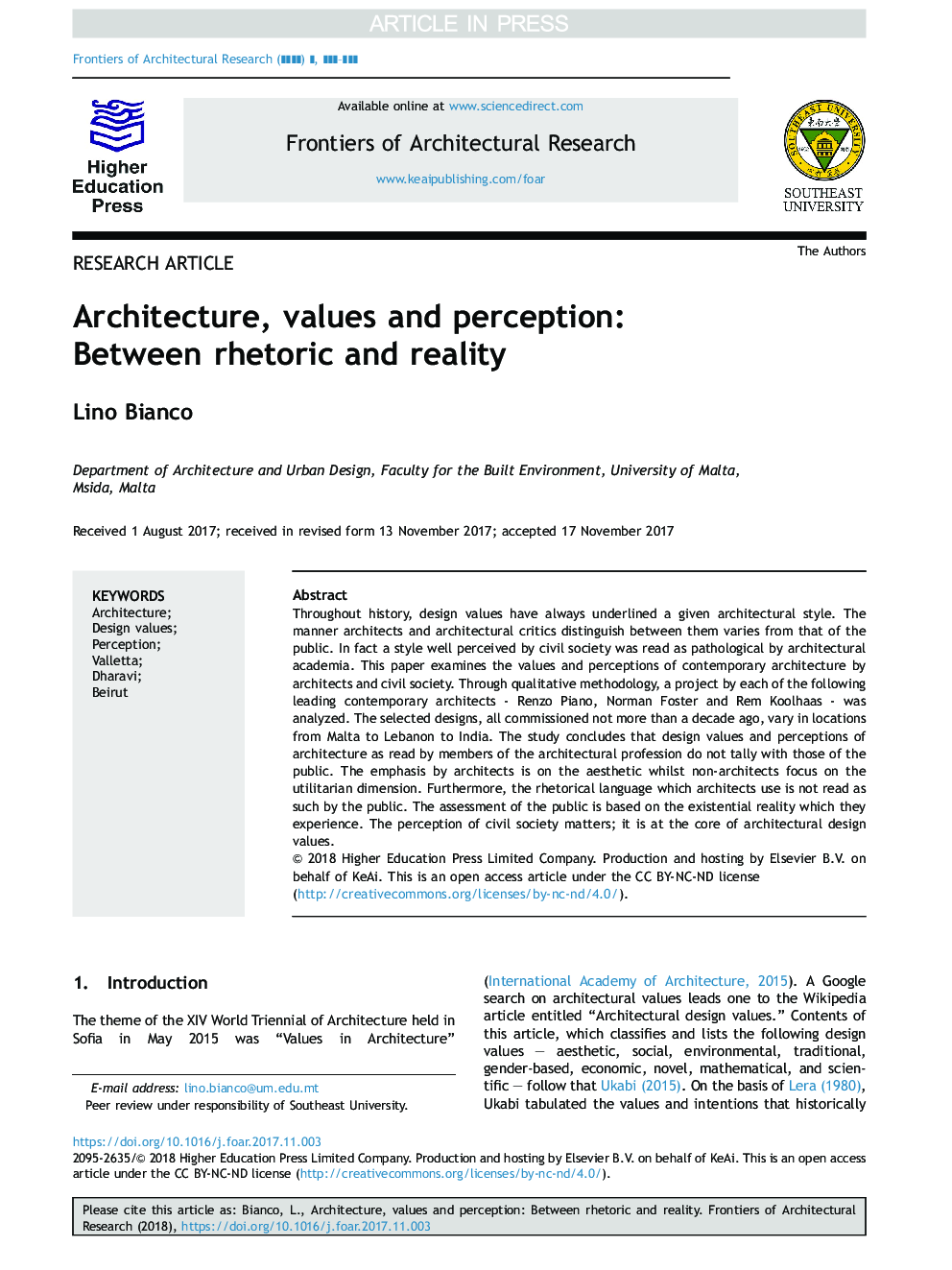| Article ID | Journal | Published Year | Pages | File Type |
|---|---|---|---|---|
| 6742427 | Frontiers of Architectural Research | 2018 | 8 Pages |
Abstract
Throughout history, design values have always underlined a given architectural style. The manner architects and architectural critics distinguish between them varies from that of the public. In fact a style well perceived by civil society was read as pathological by architectural academia. This paper examines the values and perceptions of contemporary architecture by architects and civil society. Through qualitative methodology, a project by each of the following leading contemporary architects - Renzo Piano, Norman Foster and Rem Koolhaas - was analyzed. The selected designs, all commissioned not more than a decade ago, vary in locations from Malta to Lebanon to India. The study concludes that design values and perceptions of architecture as read by members of the architectural profession do not tally with those of the public. The emphasis by architects is on the aesthetic whilst non-architects focus on the utilitarian dimension. Furthermore, the rhetorical language which architects use is not read as such by the public. The assessment of the public is based on the existential reality which they experience. The perception of civil society matters; it is at the core of architectural design values.
Related Topics
Physical Sciences and Engineering
Energy
Renewable Energy, Sustainability and the Environment
Authors
Lino Bianco,
